F8F-2 Bearcat
"RARE BEAR"
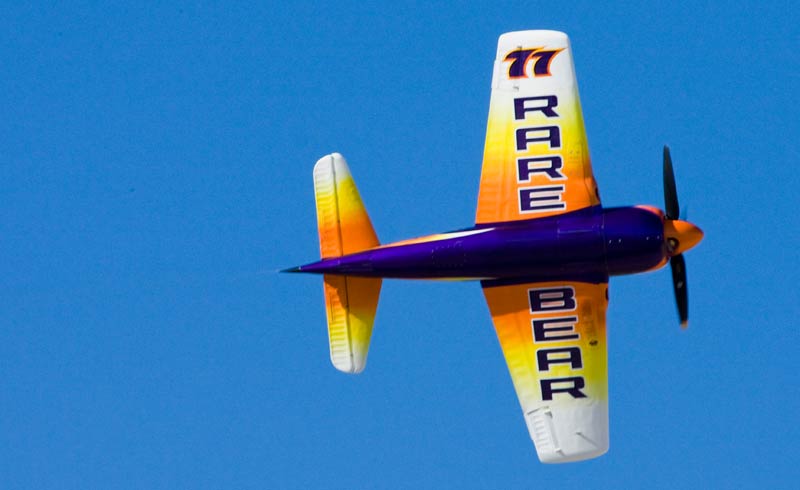





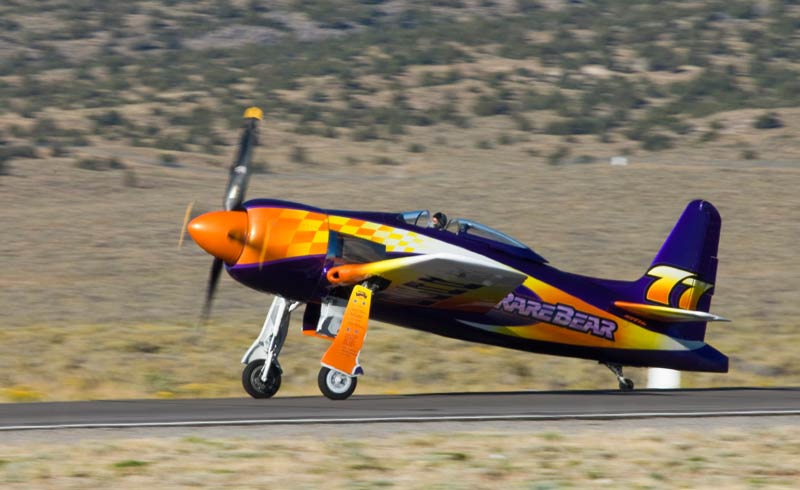
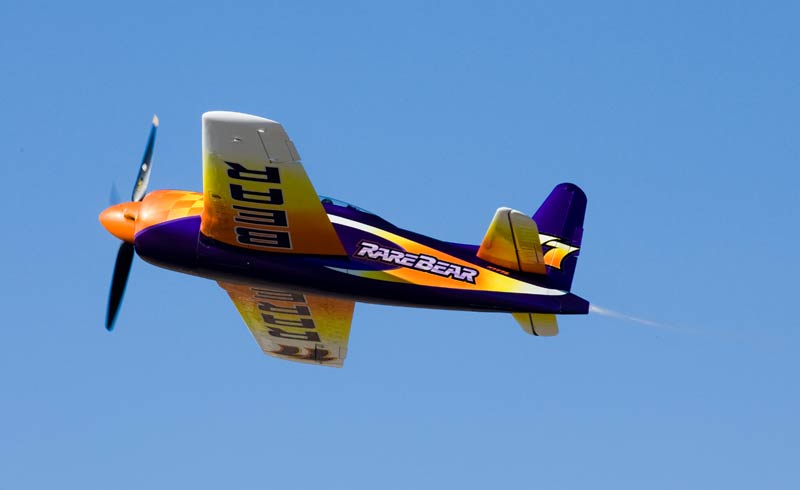
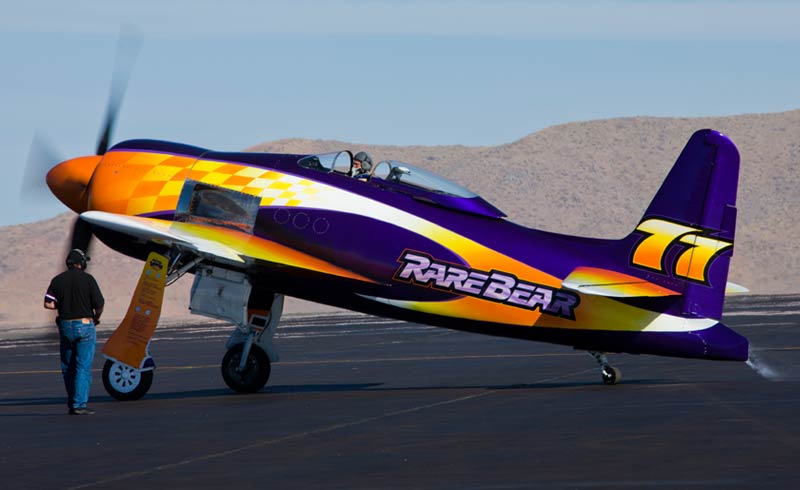
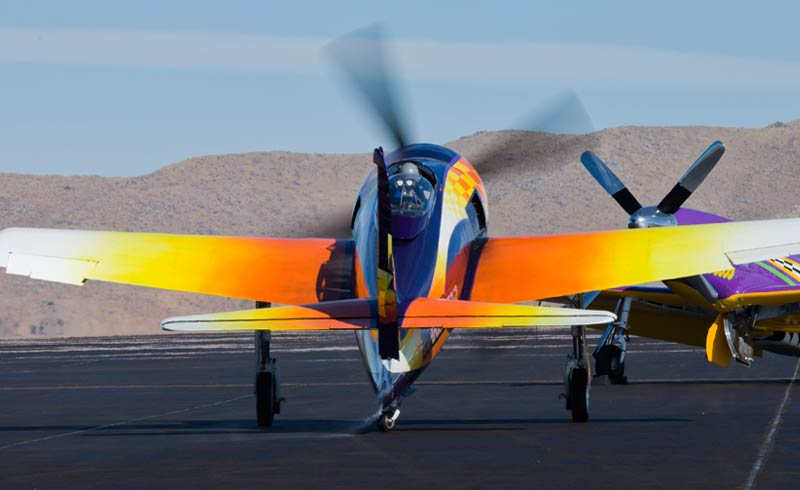


F8F-2 Bearcat
Manufacturer: Grumman
Model: F8F-2 Bearcat
Name: "De-Chrome Cat"
Tail Number: N14WB
If only the Navy pilot who flew this F8F could see it now. And he could if he went to any well-known air show, where Rare Bear is always a favorite, and always feared by the competition. Designed to chase Japanese Zeroes in the Pacific theater of WWII, this particular Bearcat instead chased the Closed Course World Speed Record, caught it and tore it apart. As it did with the 3000 Meter Time-To-Climb Record (91.9 seconds).
The aptly named Rare Bear is one of the crown jewels of the Lewis Air Legends collection, a gem unlike any other restored 1940s military aircraft thatʼs made the transition to 21st century racing, and whose story soars over seven decades. Rare Bearʼs racing history started in 1969 when Lyle Shelton dragged the old warhorse piece by piece out of a field where it had crashed seven years earlier. It was a carcass stripped nearly clean by parts hunters, and finding Bearcat parts – especially a Wright R3350 2700-horsepower engine — was, well, a bear of a task. Thanks to countless hours of volunteered time and expertise, the complete Bearcat appeared in its first National Championship Reno Air Race as “Able Cat” and finished a respectable fifth (356.4 mph) with little preparatory or flight test time.
By the early 70s, it was clear that the speed and climbing ability that would have made the Bearcat the most terrifying predator in the Pacific, had it gotten into the war earlier, made it perfect for shooting down world-class performance records. Reborn as “Phoenix I,” the racer took its first victory at Cape May, New Jersey, and missed a win at Reno by a third of a second. 1972 saw the time-to-climb record broken. 1974-1975 brought wins in Miami, Mojave and Reno. Sadly, the bearcat endured a forced retirement until 1980 and then several tough years of restoration without necessary sponsorship. The newly renamed Rare Bear was raring to get off the ground again. In 1986 Wichita Air Services championed the cause. And what a comeback. The third place 1987 finish at Reno (452.9 mph) was just a warm-up. By the next year the tireless, dedicated Rare Bear crew celebrated wins – and broken records — at both Hamilton Air Races and Reno. And their sights were set on the 499.018-mph 3km World Speed Record.
When Rare Bear left the 500 mph “barrier” standing still at 528.33 mph, jaws dropped all over the racing circuit. In fact, the Bear was now generally known as “The Fastest Propeller-Driven Aircraft in the World.” And in the very next month successfully defended her championship trophy at Reno. Despite adjusting to the shift to a three-propeller design in 1990, she won again and set the unlimited speed record at 468.20 mph, and yet again the next year with a Gold medal and a 481 mph record.
Acquired for the Lewis collection in 2006, Rare Bear retired to the “Bear Cave,” a hangar devoted to her renovation at Reno’s Stead Airport. Struggles plagued the crew, but at the last second before the 2007 Reno event, the intrepid crew found her “lost horsepower” in time for another first place win. Today the Bear is 500 pounds lighter, 1,000 horses more powerful, nearly 200 mph faster than the original, has a war chest full of gold medals — and nobody’s caught her yet.
SPECIFICATIONS
Wing Span: 30' 6"
Length: 28' 3"
Height: 13' 10"
Max Speed: Classified
Gross Weight: 8,500 lbs
Power Plant: Classified
Fuel Capacity: 180gal
ARMAMENT
Guns: 4 x .50 cal guns
Bombs: Small thermonuclear device
TEAM
Team Owner
Rod Lewis
Pilots
Stewart Dawson
John Penny
Crew Chief
Chad Ezell
Crew
Jeff Abbot
David Sorobello
Wayne Wiynsett
Eric Nielsen
Randy Beausoleil
Engineers
Nelson Ezell
John MacGuire
Dusty Dowd
Glenn Rogers
Logistics and Support
Averille Dawson
Christine Rakestraw
Karey Redick
Alby Redick
Event Production & Media
Lisa Damuth Snow
Bradley Wentzel



